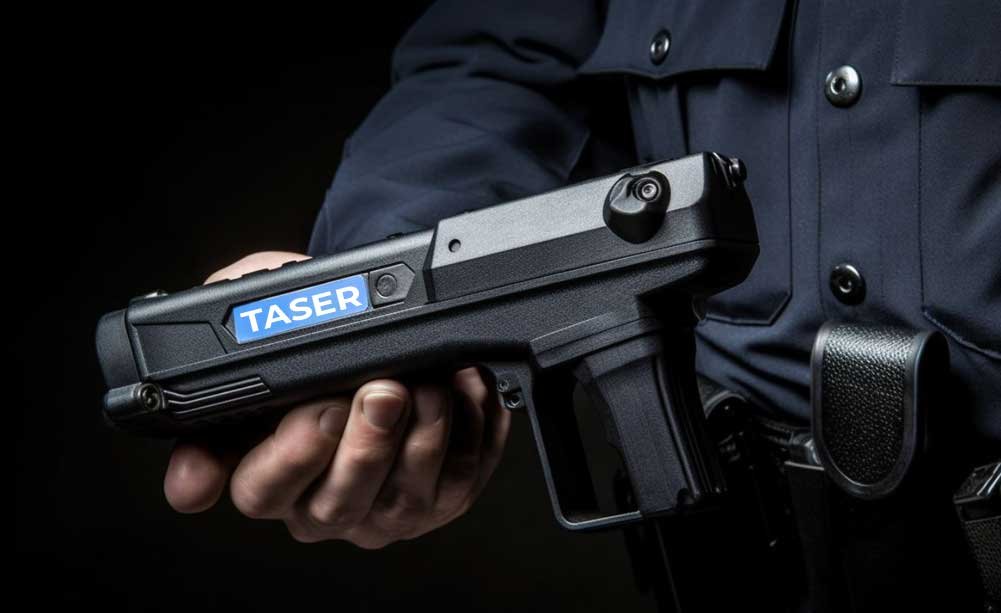How Many Volts is a Police Stun Gun?
Stun guns have become an essential tool in law enforcement's arsenal, valued for their non-lethal means of subduing potential threats. However, despite their widespread use, public understanding of these devices, particularly regarding their voltage output, remains murky. Today, we'll aim to answer the pressing question, "How many volts is a police stun gun?"
Related Questions
-
Not necessarily.
The effectiveness of a stun gun depends on a combination of voltage and amperage. A higher voltage can ensure the electrical current penetrates clothing or skin, but the stun gun's incapacitating effect primarily comes from the disruption of electrical signals in the nervous system, which can be achieved with a low current.
-
While stun guns are designed as non-lethal tools, there have been cases of serious injuries and even deaths, typically resulting from misuse or use on individuals with pre-existing health conditions.
-
The effects can last from several minutes up to an hour, depending on factors such as the duration of the stun, the individual's size, health, and level of physical activity at the time of application.
-
Laws vary greatly by country and within the United States, by state and city. While in some places, it's legal for civilians to own and carry stun guns, others have strict regulations or bans. It's crucial to check local laws before purchasing or carrying a stun gun.
Short Answer:
Q: How many volts is a police stun gun?
A: About 50,000 volts.
The Basics: What is a Stun Gun?
A stun gun is a handheld device that uses electrical current to disrupt voluntary control of muscles, causing "neuromuscular incapacitation." Contrary to popular belief, stun guns and Tasers are not the same. A Taser is a brand of stun gun that can operate from a distance by firing projectiles attached to the device by wires. A stun gun, however, requires direct contact with the target.
Voltage and Amperage: A Brief Primer
To understand the strength of a stun gun, one must first comprehend the concepts of voltage and amperage. Voltage is a measure of electrical force, while amperage, or current, is the amount of electricity flowing. Think of it in terms of water flowing through a pipe: voltage is the water pressure, and amperage is the amount of water.
The Power of a Police Stun Gun
Police stun guns can typically deliver a voltage of 50,000 volts. However, this high voltage shouldn't be confused with lethality.
While the voltage is high, the current or amperage delivered is low, usually below 3 milliamperes. The high voltage ensures that the electric shock can pass through heavy clothing or skin, while the low current ensures it doesn't cause serious injury or death.
Understanding the Effects
When the high voltage, low current charge enters the body, it disrupts the normal electrical signals within the nervous system. This typically causes muscle contractions and temporary paralysis, giving law enforcement personnel enough time to apprehend the individual.
The effect of the stun gun depends on several factors, including the duration of application, the individual's size, health condition, and level of physical activity at the time of application. However, most people recover completely within several minutes to an hour following exposure.
Stun Gun Safety and Controversy
Although designed as a non-lethal tool, stun guns have been associated with several incidents of injuries and even deaths. The controversy lies primarily around the misuse or overuse of stun guns, as well as their use on individuals with underlying health conditions.
Due to these concerns, many law enforcement agencies have developed strict guidelines for stun gun use, requiring officers to undergo rigorous training. These agencies often emphasize that stun guns should be used only when necessary and not as a punitive tool.
The Future of Stun Guns
Advancements in technology have led to the development of "smart" stun guns, capable of recording the time, duration, and the number of times the device has been used. These technological enhancements aim to promote accountability and responsible use of these devices among law enforcement personnel.








Inside the Investigation: A Deeper Dive into Police Detective Benefits